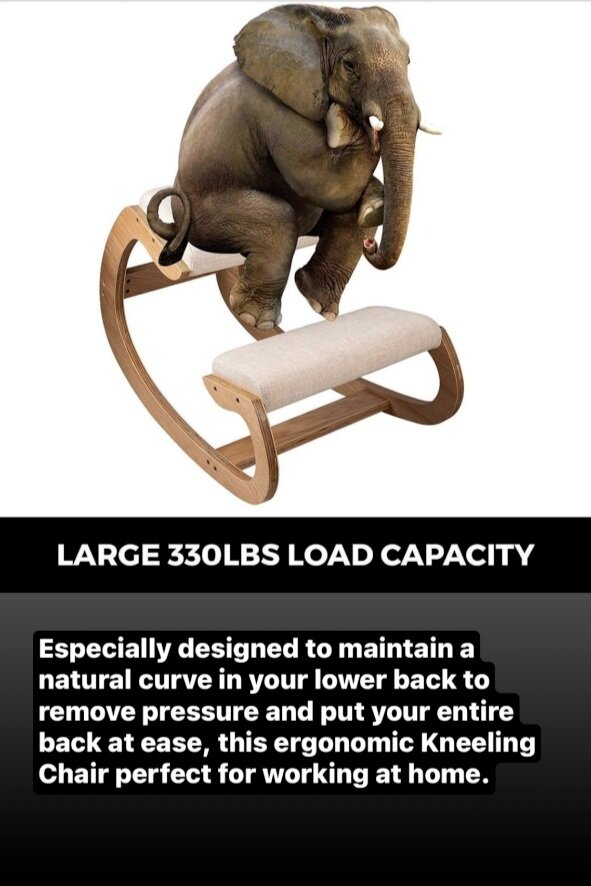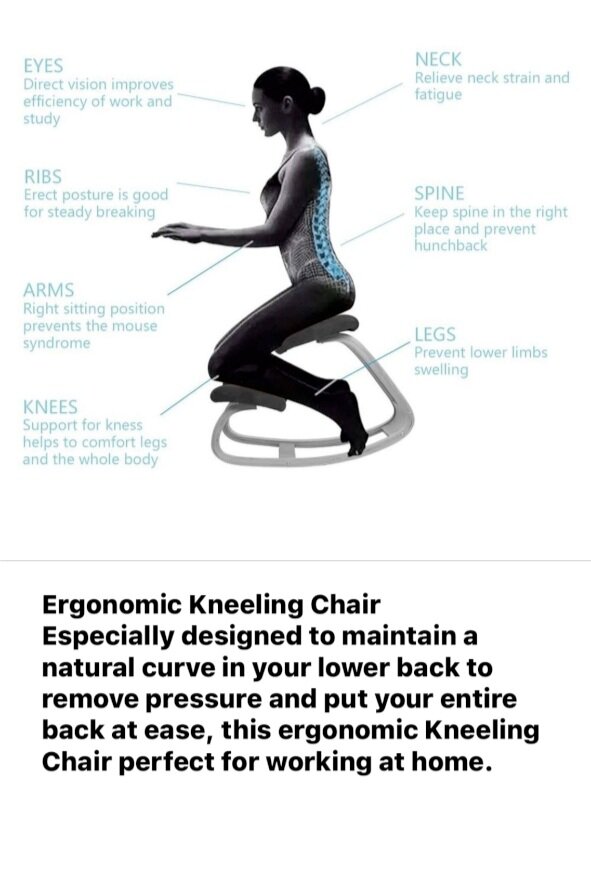I don’t know about you, but recently the sponsored posts on my social media seem to be flooded with adverts for kneeling stools. Coincidentally, a large number of those I have remotely assessed working from home over the past few weeks have also been using kneeling stools, and it’s got me thinking…
Should you buy one?
Above are some of the sponsored posts I have seen recently. They make wonderful claims such as ‘relieving neck strain’, ‘direct vision improves efficiency of work’ and ‘right sitting position prevents mouse syndrome’ (I’m not entirely sure the elephant was necessary, but we’ll bypass that!). However, what does that all mean?!
Let’s talk about the advantages:
It encourages activation of the core stability muscles to help protect the spine and facilitate an upright working posture.
It enables a nice open angle at the pelvis, reducing tension in the hip flexors whilst also helping to support the natural S shape of the spine.
In limited spaces, they can tuck quite nicely underneath your workstation at the end of the working day - especially important for a lot of us working at home!
It may be more aesthetically pleasing to some users, in comparison to your standard office chair.
In a non-socially distanced world, it can be quite the talking point when friends or family are over to visit. This is great at getting people to think more about their workstation set up and sitting habits.
However, there are a few disadvantages too:
The sitting load is not evenly distributed over the sitting bones and the belly of the hamstring muscles, and is instead directed mostly over the knee joints. This may not be ideal for those that have other conditions affecting the knees or lower limbs.
Not all the options on the market have the option of adjusting the sitting height. This may mean that your sitting elbow height is not suitable for your desk height. Subsequently, you may be encouraged to either elevate your shoulders to use your equipment if the stool is too low, or lean over the desk if the stool is too high.
Not all options feature a swivel gas stem, this means that you may be more inclined to twist at your workstation to retrieve paperwork for example, or refer to a secondary monitor. (On a side note, I have been re-watching Downton Abbey in my spare time and noticed that the writers made reference to the Dowager Countess of Grantham’s surprise to the novelty of sitting in a chair that swivelled in 1912. Granted, it was still wooden and not adjustable in other ways, but at least it could swivel!).
It can be fatiguing. Sitting with your core muscles activated can be tiring and this may lead to poor, slouched postures - the complete opposite of what a kneeling stool is designed to do! With slouched postures comes an increase in load and pressure through the spine, which may increase discomfort in the lower back.
So, should you buy one?
Frustratingly, I think the answer is… it depends.
It depends on:
Finding one that is as adjustable as possible with a swivel gas stem. Look for seat height, seat tilt and knee pad distance adjustments. The majority of claims in the adverts above will only be true if you can adjust the stool to the right height for the desk (and then position the desktop equipment suitably for your sitting height).
How long you would use it for. Personally, I would not recommend any kneeling stool for long periods, but the more adjustable ones have their benefits when used in conjunction with a more standard chair with back support. As an example, you could consider using a kneeling stool for approximately 15-20 minute periods to help activate the core stability muscles, before returning to a more standard chair to relax back into for spinal support.
If you have any other conditions that affect the knees. If you experience sore knees or have been diagnosed with any joint issues, my personal advice is to avoid a kneeling stool.
In any case, as humans, we are not designed to sit still. So regardless of the type of chair you use you should remember to move as much as possible, changing your posture regularly.
If you are thinking of purchasing a kneeling stool, I would highly advise getting one on a trial period to see how it suits you - and be mindful of these sponsored posts that may pop up after you’ve been searching the internet for a new chair for working at home.
If you’re still unsure, I am here to help. Please use the contact form to get in touch.



